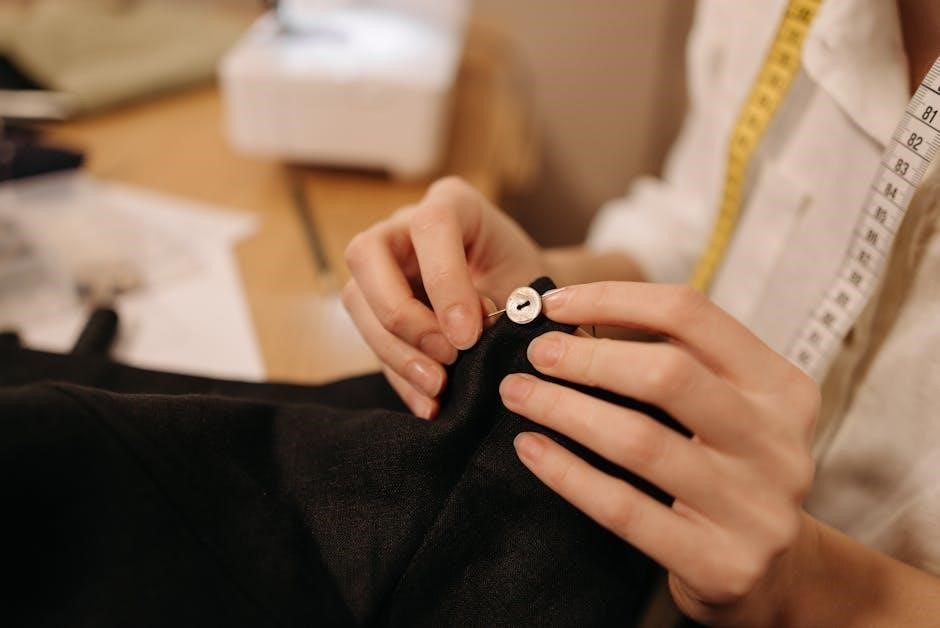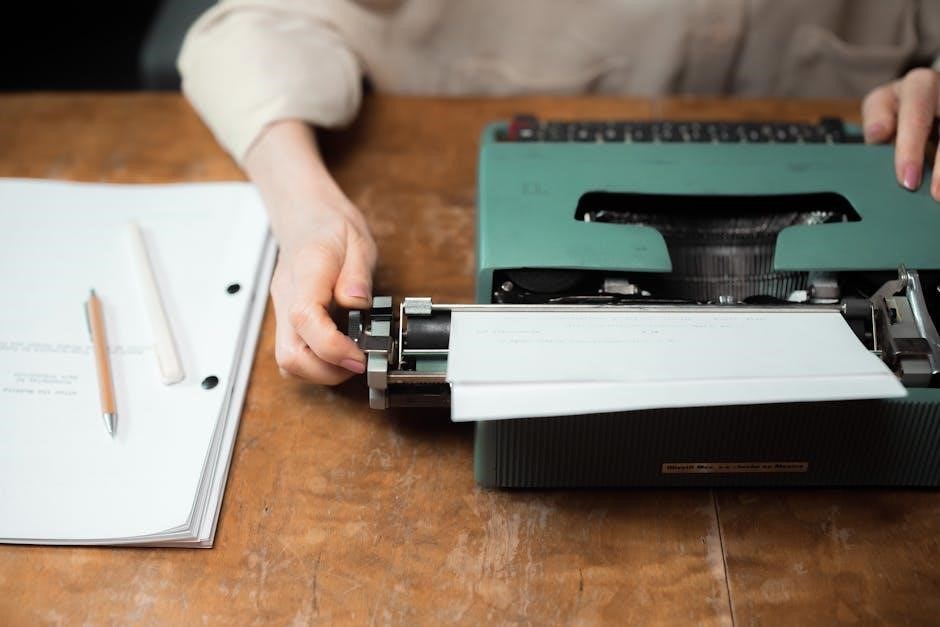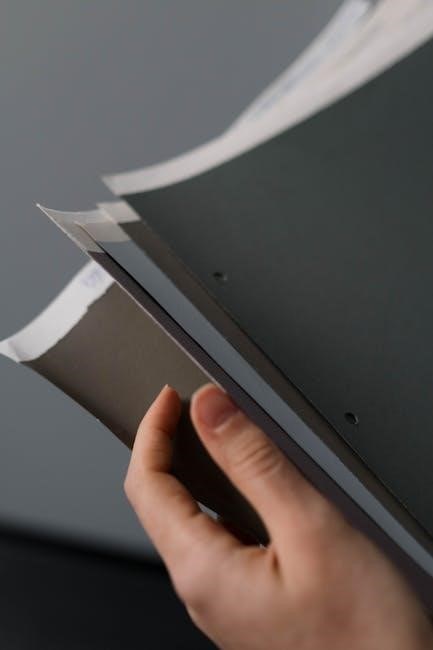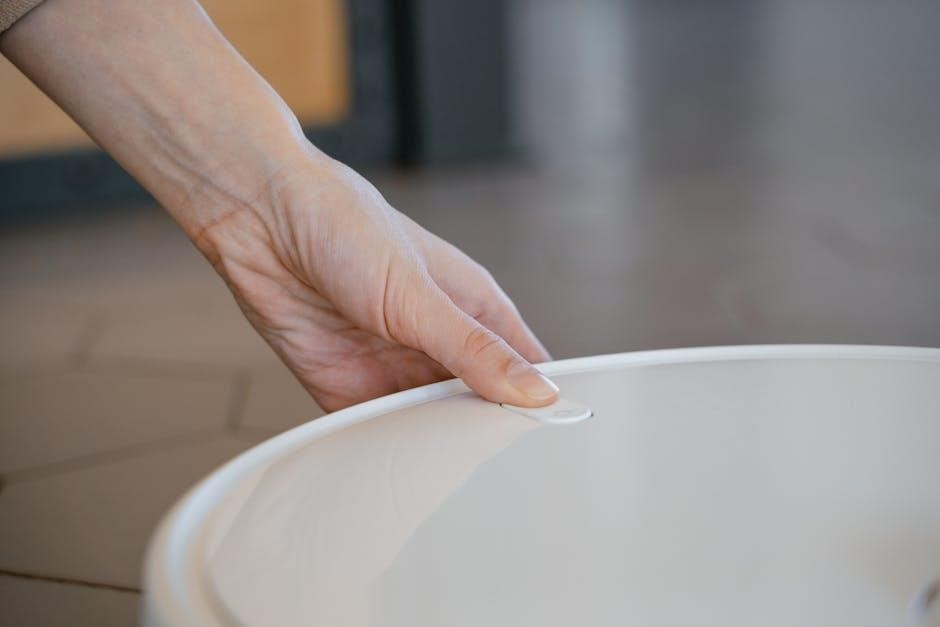Samsung thermostat manuals are vital resources, offering comprehensive guidance for installation, operation, and troubleshooting. This guide unlocks access to support for diverse Samsung models.
Understanding your thermostat’s features and functions is now easier than ever, ensuring optimal comfort and energy efficiency within your home environment.
What This Guide Covers
This comprehensive guide meticulously details everything you need to know about your Samsung thermostat. We’ll navigate locating manuals online, deciphering complex model numbers, and understanding core operational features.
Expect detailed instructions on programming schedules, utilizing hold functions, and exploring advanced settings like SmartThings integration and geofencing. Furthermore, we address common troubleshooting scenarios, part replacement guidance, and crucial warranty information.
Finally, we’ll cover compatibility considerations and the importance of keeping your thermostat’s firmware updated for peak performance.
Importance of Having the Manual
A Samsung thermostat manual is indispensable for maximizing your system’s potential. It provides crucial safety information, preventing potential hazards during installation or maintenance. Understanding the manual unlocks advanced features, optimizing energy efficiency and reducing utility bills.
Troubleshooting becomes significantly easier with the manual’s guidance, potentially avoiding costly service calls. Proper operation extends the lifespan of your thermostat, safeguarding your investment. Accessing the correct manual ensures compatibility and correct usage of all features.

Understanding Samsung Thermostat Model Numbers
Decoding Samsung’s model numbers is key to identifying specific features and specifications of your thermostat. These codes reveal crucial details about the device.
Decoding the Model Number System
Samsung’s model number system employs a series of alphanumeric characters, each representing specific attributes of the thermostat. Understanding this structure is essential for identifying features, compatibility, and even the manufacturing region. The codes often indicate the thermostat’s functionality – whether it’s a standard, smart, or Wi-Fi enabled model.
These identifiers also reveal details about the thermostat’s intended use and the HVAC systems it supports. Deciphering these codes empowers informed purchasing decisions and ensures compatibility with your existing home setup, maximizing efficiency and control.
Locating Your Thermostat’s Model Number
Finding your Samsung thermostat’s model number is crucial for accessing the correct manual and support resources. Typically, the model number is located on a sticker affixed to the back of the thermostat unit itself. You may need to carefully remove the thermostat from the wall plate to view it.
Alternatively, check the original packaging or your purchase receipt; the model number is often printed there. Having this number readily available streamlines troubleshooting and ensures you receive accurate assistance from Samsung support.
Common Samsung Thermostat Model Series
Samsung offers several thermostat model series, each with unique features. Popular series include those integrated with SmartThings, offering advanced smart home control. Other common series cater to standard HVAC systems, providing reliable temperature management. Identifying the series helps narrow down manual searches.
Specific model numbers, like those utilizing parts DA47-10159G, DA47-10159F, or DA47-10159D, indicate compatibility and available resources. Knowing the series simplifies finding relevant documentation and support.
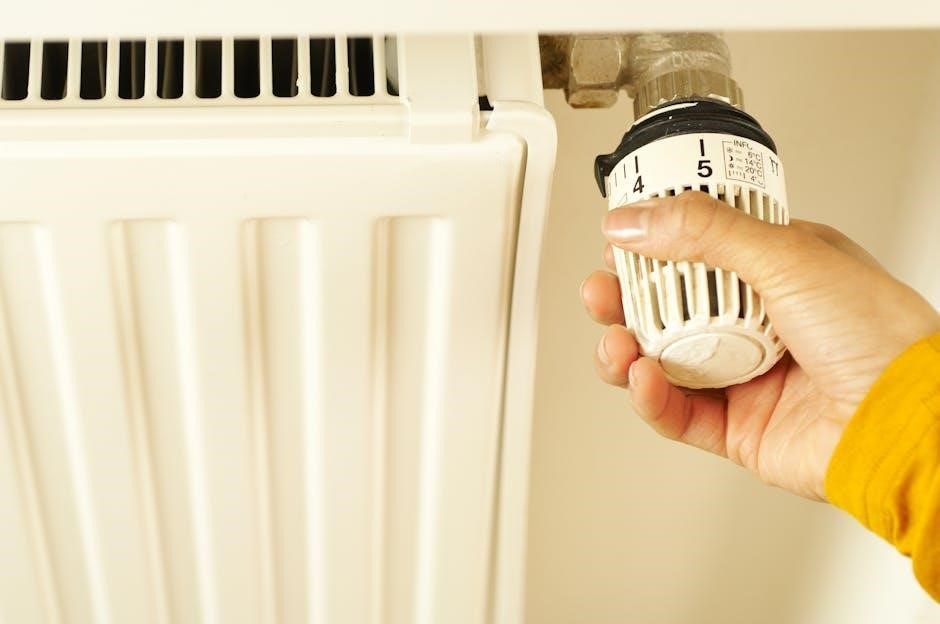
Finding Your Samsung Thermostat Manual Online
Locate your Samsung thermostat manual easily through the official Samsung support website, third-party databases, or a targeted Google search for quick access.
Official Samsung Support Website
Samsung’s official support website is the primary and most reliable source for your thermostat manual. Navigate to Samsung’s website and locate the support section, then search specifically for “thermostats.”
You’ll typically be prompted to enter your model number to find the corresponding manual. The website offers downloadable PDFs, often including installation guides, user manuals, and troubleshooting documentation. This ensures you have the most accurate and up-to-date information directly from the manufacturer, guaranteeing compatibility and clarity.
Third-Party Manual Databases
Several online databases compile manuals from various manufacturers, including Samsung. Websites like ManualsLib and similar platforms often host user-uploaded manuals for Samsung thermostats.
While convenient, verify the manual’s accuracy and relevance to your specific model number. These databases may contain outdated or incomplete information. Always cross-reference with Samsung’s official website when possible to ensure you’re using the correct and most current documentation for optimal performance.
Using Google Search Effectively
To locate your Samsung thermostat manual via Google, use specific search terms. Combine “Samsung thermostat,” your exact model number, and “manual” or “user guide.”
Utilize advanced search operators like “filetype:pdf” to directly find downloadable PDF manuals. Refine searches by adding keywords like “installation” or “troubleshooting” for targeted results. Always prioritize links leading to Samsung’s official support site for the most reliable documentation.

Basic Thermostat Operation
Samsung thermostats feature intuitive controls for adjusting temperature and modes. Power on, navigate the display, and easily switch between heating and cooling functions.
Familiarize yourself with the interface for comfortable, efficient climate control.
Powering On and Initial Setup
Upon installation, ensure your Samsung thermostat receives adequate power – typically through a C-wire connection or compatible power adapter. The initial startup will guide you through a series of prompts.
These prompts include language selection, date and time configuration, and connecting to your home’s Wi-Fi network. Accurate network setup is crucial for smart features. Follow the on-screen instructions carefully to establish a stable connection and unlock remote control capabilities via the SmartThings app.
Display Overview and Navigation
Samsung thermostat displays typically feature a touchscreen interface, presenting current temperature, setpoint, mode (heat, cool, auto), and fan settings. Intuitive icons represent each function for easy recognition.
Navigation involves tapping or swiping across the screen. Accessing menus reveals scheduling options, advanced settings, and system information. Familiarize yourself with the layout to efficiently adjust settings and monitor energy usage. The display’s brightness is often adjustable for optimal visibility.
Temperature Control – Heating and Cooling
Samsung thermostats offer precise temperature control for both heating and cooling systems. Adjust the setpoint using the touchscreen or mobile app, selecting desired temperatures for comfort.
Switch between heating, cooling, and auto modes to let the thermostat manage temperature automatically. Fan control options include auto, on, and circulate, influencing air distribution. Monitor current room temperature displayed prominently on the screen for optimal climate management.

Programming Your Samsung Thermostat
Samsung thermostats allow customized schedules for optimal comfort and energy savings. Easily set different temperatures for various times and days, creating personalized programs.
Utilize hold functions for temporary overrides, maintaining desired temperatures until schedules resume.
Setting Schedules for Different Days
Samsung thermostats excel in scheduling flexibility. Manual programming allows distinct temperature settings for weekdays versus weekends, or even individual days. Access the scheduling menu through the thermostat’s interface, typically indicated by a calendar or clock icon.
Define multiple periods per day – wake, leave, return, and sleep – each with a specific temperature. Preview your weekly schedule to ensure accuracy and comfort. Save customized programs for consistent climate control, maximizing energy efficiency and personal preference.
Using Hold Functions
Samsung thermostat manuals detail “Hold” functions, overriding programmed schedules temporarily. A “Temporary Hold” maintains the set temperature for a specified duration, reverting to the schedule afterward. A “Permanent Hold” locks in the current temperature indefinitely, disabling the programmed schedule.
Access Hold options via the thermostat’s display. Utilize these features for unexpected schedule changes or when consistent temperatures are desired, offering convenient control without extensive reprogramming.
Creating Customized Programs
Samsung thermostat manuals explain how to build personalized heating and cooling schedules. Most models allow setting different temperatures for various times and days, optimizing comfort and energy savings. Access the programming mode through the thermostat’s menu, typically indicated by a “Schedule” or “Program” option.
Define wake, leave, return, and sleep periods with corresponding temperature settings, tailoring the system to your lifestyle. Save multiple programs for different scenarios.

Advanced Features and Settings
Samsung thermostats offer smart home integration via SmartThings, geofencing for automated control, and energy-saving modes. Explore these features within the manual for optimal performance.
Smart Home Integration (SmartThings)
Samsung thermostats seamlessly integrate with the SmartThings ecosystem, allowing remote control and automation through the SmartThings app. This connectivity enables voice control via Samsung Bixby and other compatible voice assistants like Google Assistant and Amazon Alexa.
The manual details the setup process, including linking your thermostat to your SmartThings hub. You can create routines, monitor energy usage, and receive alerts, enhancing convenience and energy efficiency. Explore advanced scenarios like automated temperature adjustments based on occupancy or external weather conditions.
Geofencing Capabilities
Samsung thermostats with geofencing utilize your smartphone’s location to automatically adjust temperatures. The manual explains how to configure a virtual perimeter around your home within the SmartThings app. As you approach or leave this zone, the thermostat intelligently switches between pre-set “Home” and “Away” modes.
This feature optimizes energy consumption by avoiding heating or cooling an empty house, providing significant cost savings and enhanced comfort. Detailed instructions within the manual guide you through setting up and customizing geofencing parameters.
Energy Saving Modes
Samsung thermostats offer several energy-saving modes detailed in the manual, designed to reduce consumption without sacrificing comfort. These include Eco Mode, which optimizes settings for efficiency, and Scheduled modes, allowing pre-programmed temperature adjustments based on your routine.
The manual explains how to activate and customize these modes, maximizing savings. Learn about features like Smart Learning, which adapts to your preferences, and how to monitor energy usage through the SmartThings app for optimal control.

Troubleshooting Common Issues
Samsung thermostat manuals provide solutions for common problems like unresponsive displays, inaccurate temperatures, and Wi-Fi connectivity issues.
Follow the manual’s diagnostic steps to quickly resolve these issues and restore optimal thermostat functionality.
Thermostat Not Responding
If your Samsung thermostat isn’t responding, the manual suggests checking the power supply first. Ensure the thermostat is receiving adequate power, verifying the breaker hasn’t tripped and the wiring is secure.
Next, attempt a reset by removing the thermostat from its wall plate for a minute, then reattaching it. Consult the manual for specific reset procedures for your model. If the issue persists, review the manual’s troubleshooting section for further guidance or contact Samsung support.
Inaccurate Temperature Readings
If your Samsung thermostat displays inaccurate temperatures, the manual recommends verifying its location. Avoid direct sunlight, drafts, or proximity to heat sources, as these can skew readings. Check for obstructions blocking airflow around the unit, as detailed in the manual.
Calibrate the thermostat using the settings outlined in your manual. If calibration doesn’t resolve the issue, consult the manual’s troubleshooting guide or contact Samsung support for assistance.
Connectivity Problems (Wi-Fi)
Samsung thermostat manuals detail Wi-Fi troubleshooting steps. First, ensure your home network is functioning correctly and the thermostat is within range of the router. Refer to the manual for specific network requirements, like 2.4GHz compatibility.
Restart both the thermostat and your router. If issues persist, consult the manual for instructions on resetting the thermostat’s network settings and reconnecting to Wi-Fi. Samsung support can also assist.

Replacing Parts
Samsung thermostat manuals guide safe part replacement. Identify compatible parts like DA47-10159G/F/D, following safety precautions detailed within the manual.
Always disconnect power before proceeding with any repairs or component substitutions.
Identifying Compatible Replacement Parts (DA47-10159G, DA47-10159F, DA47-10159D)
Samsung utilizes specific part numbers for thermostat components, ensuring compatibility and proper function. Commonly requested replacements include DA47-10159G, DA47-10159F, and DA47-10159D.
Your Samsung thermostat manual is the primary source for verifying the correct part number for your specific model. Cross-referencing the model number with the parts list within the manual prevents incorrect purchases. Online parts databases also assist in identification, but always confirm with the manual first.
Using the wrong part can damage the thermostat or HVAC system.
Safety Precautions for Part Replacement
Prioritize safety when replacing Samsung thermostat parts! Always disconnect power to your HVAC system at the breaker box before beginning any work. This prevents electrical shock and potential damage;
Consult your Samsung thermostat manual for specific safety warnings related to your model. Wear appropriate safety glasses and gloves. If you are uncomfortable with electrical work, seek professional assistance. Incorrect wiring can be hazardous.
Properly dispose of old parts according to local regulations.
Where to Purchase Replacement Parts
Genuine Samsung replacement parts are crucial for maintaining thermostat performance. You can find parts through the official Samsung Parts website, ensuring compatibility and quality. Several online appliance parts retailers also stock Samsung thermostat components like DA47-10159G.
Local HVAC supply stores may carry common parts. Always verify the part number before purchasing to guarantee a proper fit. Compare prices from different vendors to find the best deal.
Samsung Thermostat Compatibility
Samsung thermostats work with various HVAC systems, but voltage and wiring are key. A C-wire is often needed for proper operation; check your system’s requirements.
Compatibility with Different HVAC Systems
Samsung thermostats demonstrate broad compatibility, supporting conventional heating and cooling systems, heat pumps, and even multi-stage setups. However, verifying compatibility before installation is crucial.
Systems utilizing standard 24V wiring are generally supported, but older or unconventional setups might require an adapter. Carefully review your existing HVAC system’s specifications and wiring configuration. Samsung provides compatibility checkers on their support website to assist in determining if a specific model will integrate seamlessly with your current infrastructure.
Voltage Requirements
Samsung thermostats are predominantly designed to operate with low-voltage systems, typically 24VAC (Volts Alternating Current). This is the standard voltage for most residential heating and cooling setups.
Never connect a Samsung thermostat directly to a high-voltage power source (like 120V or 240V) as this will cause severe damage and poses a significant safety hazard. Confirm your HVAC system’s voltage before installation to ensure compatibility and prevent electrical issues.
C-Wire Considerations
Samsung thermostats, particularly smart models, often require a “C-wire” (common wire) for consistent power. This wire provides a continuous electrical path, preventing the thermostat from drawing power from your HVAC system.
If your existing system lacks a C-wire, several solutions exist, including using a C-wire adapter or running a new wire. Incorrect wiring can lead to functionality issues; professional installation is recommended if you’re unsure.

Manual Updates and Firmware
Samsung regularly releases firmware updates for thermostats, enhancing performance and adding features. Checking for updates ensures optimal functionality and security, improving your user experience.
Checking for Firmware Updates
Samsung thermostats often feature an automated update process accessible directly through the device’s interface; Navigate to the settings menu, typically under “System” or “About Device,” and select “Software Update.” The thermostat will then scan for available updates.
Alternatively, utilize the SmartThings app if your thermostat is integrated. Within the app, select your thermostat and check for update notifications. Regularly checking—perhaps monthly—ensures your device benefits from the latest improvements and security patches, optimizing performance and reliability.
Updating Firmware Manually
While automatic updates are preferred, manual firmware updates are sometimes necessary. Download the latest firmware file from the official Samsung support website, ensuring it matches your specific thermostat model number.
Typically, you’ll transfer the file to a USB drive, insert it into the thermostat (if applicable), and initiate the update through the device’s settings menu. Caution: Interrupting a manual update can brick your thermostat, so ensure a stable power supply throughout the process.
Benefits of Keeping Firmware Updated
Regular firmware updates for your Samsung thermostat deliver significant improvements. These updates often enhance system security, protecting against potential vulnerabilities. Performance is optimized, leading to smoother operation and faster response times.
New features and compatibility with evolving smart home ecosystems are frequently added through updates. Maintaining current firmware ensures your thermostat functions at its best, maximizing energy savings and overall user experience.

Warranty Information
Samsung thermostat warranties provide coverage for defects in materials and workmanship. Understanding your specific warranty terms is crucial for filing claims and accessing support.
Contact Samsung support for claim procedures and detailed warranty information regarding your model.
Understanding Your Warranty Coverage
Samsung thermostat warranties typically cover manufacturing defects in materials and workmanship for a defined period, often one year from the purchase date. This coverage doesn’t extend to normal wear and tear, misuse, or damage caused by improper installation.
Carefully review your warranty documentation to understand specific exclusions and limitations. Proof of purchase is essential for any warranty claim. Extended warranties may be available for purchase, offering additional protection beyond the standard coverage period. Registering your product with Samsung can streamline the claims process;
How to File a Warranty Claim
To initiate a Samsung thermostat warranty claim, gather your proof of purchase, model number, and a detailed description of the issue. Contact Samsung support via their website or phone number, outlining the problem and providing the required information.
You may be asked to provide photos or videos demonstrating the defect. Samsung will then assess your claim and, if approved, authorize a repair or replacement. Be prepared to return the defective unit if requested.
Contacting Samsung Support
For direct assistance with your Samsung thermostat, reach out to Samsung Support through their official website. A comprehensive FAQ section and live chat options are typically available. Alternatively, you can connect via phone; locate the specific number for HVAC products on Samsung’s contact page.
Ensure you have your model number ready for efficient service. Social media channels may also offer support, but prioritize official channels for warranty or technical issues.
Safety Information
Always disconnect power before any maintenance. Follow electrical safety guidelines and dispose of old thermostats responsibly, adhering to local regulations for electronic waste.
Important Safety Precautions
Prioritize safety during installation and operation. Never attempt repairs beyond your expertise; consult a qualified HVAC technician. Ensure the power supply matches the thermostat’s voltage requirements to prevent electrical hazards.
Avoid exposing the thermostat to excessive moisture or extreme temperatures. Always read and understand all warnings and instructions within the manual before proceeding with any setup or adjustments. Improper handling can lead to malfunction or damage.
Electrical Safety Guidelines
Always disconnect power at the breaker before working with wiring. Verify the system is de-energized using a voltage tester. Never touch exposed wires or components. Ensure proper grounding to prevent electrical shock.
Follow all local electrical codes and regulations. Use insulated tools designed for electrical work. If unsure about any electrical aspect, consult a qualified electrician. Improper wiring can cause fire or damage to the thermostat.
Proper Disposal of Old Thermostats
Do not discard old thermostats with regular household waste. Many contain mercury or other hazardous materials requiring special handling. Check with your local waste management authority for e-waste recycling programs.
Samsung encourages responsible disposal. Consider returning the thermostat to an authorized Samsung recycling center. Proper disposal protects the environment and public health. Follow all local regulations regarding electronic waste disposal.










